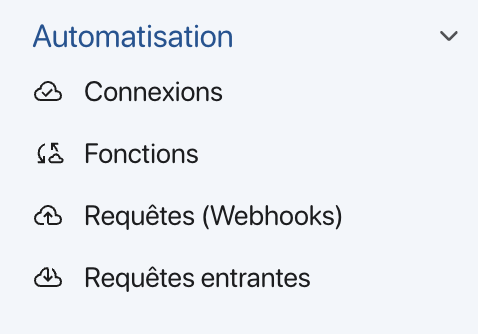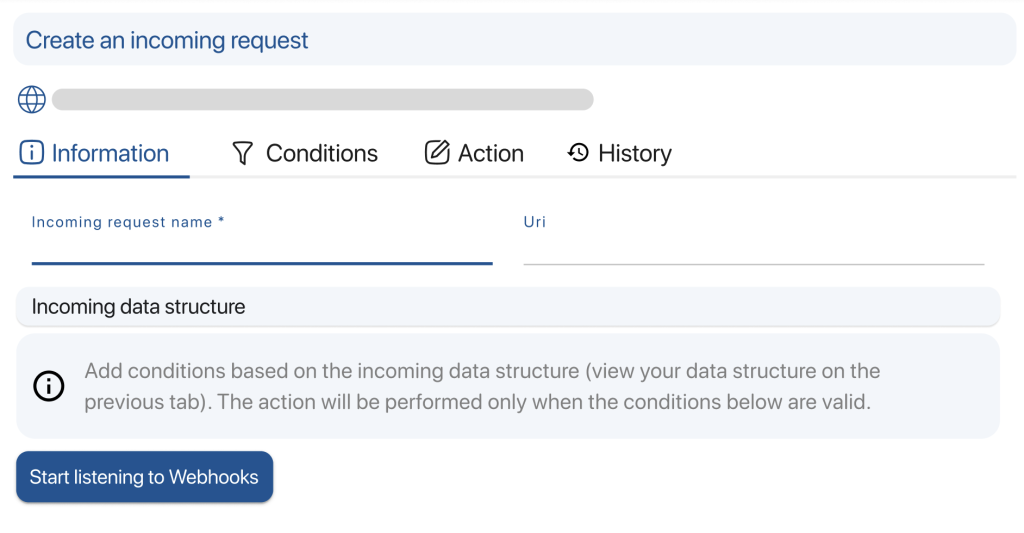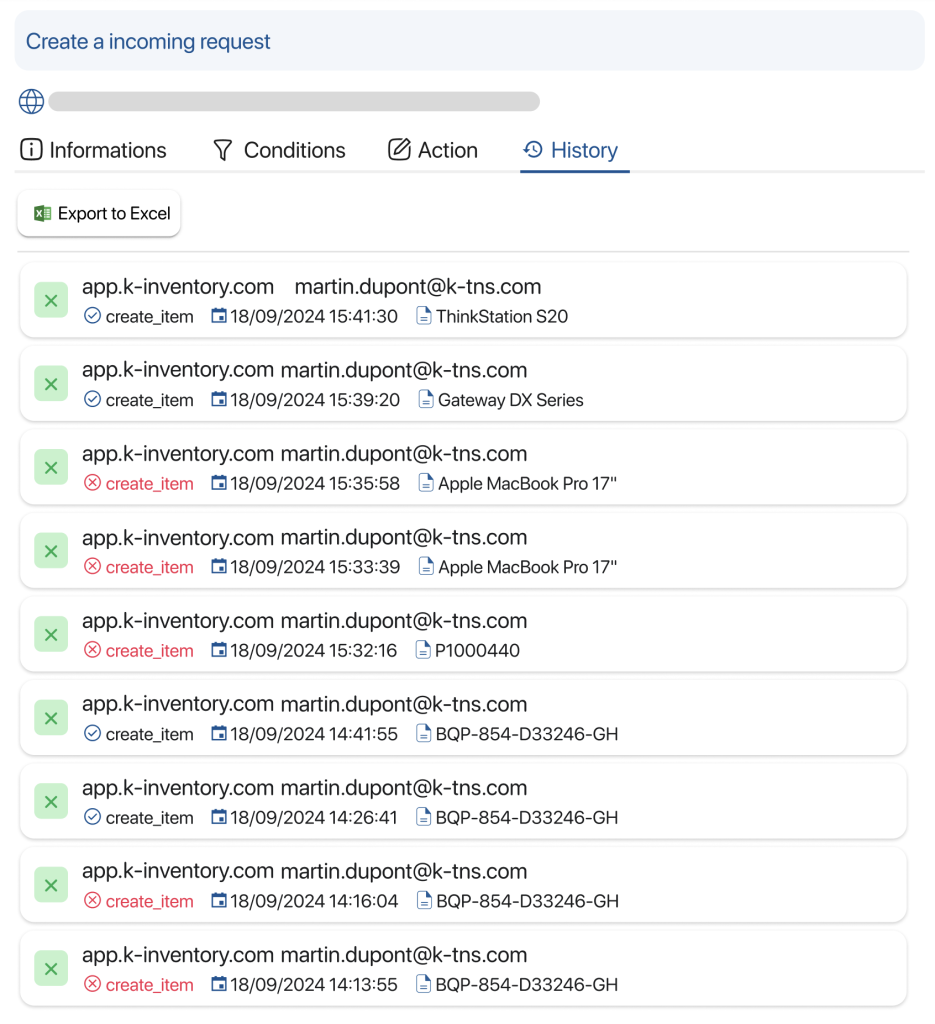K inventory now lets you automatically receive data from your external tools, thanks to its automation module and universal API. Set up incoming queries to update your K inventory database effortlessly, and without writing a single line of code!
What is an incoming request?
An incoming request, also known as a “webhook”, enables K inventory to receive real-time information from your other applications. For example, when a new order is placed on your online store, a webhook can be sent to K inventory to automatically update your stock.
How do I configure an incoming request?
1. Go to Incoming requests
-
- In the K inventory main menu, click on the “PARAMETERS” TAB..
- In the “Automation” sectionsection, click on “Incoming requests.

2. Create a new incoming request
-
- Click on the “TO CREATE AN INCOMING REQUEST.
- Give your request a clear, descriptive name (e.g. “Webhook new order”).

3. Configure your request
-
- Query URL : K inventory will generate a unique URL for this request. It is this URL that your external tool must use to send the data.
- Listening for webhooks: Enable listening to start receiving webhooks on the generated URL.
- Data structure : To view an example of the data structure expected by K inventory, send a test request to the URL while listening is active.
- Conditions (optional): Define filters to process only those requests that meet certain criteria (for example, only orders of a certain value).
- Action to be taken : Associate the fields received in the webhook with the corresponding fields in K inventory. This allows you to define how the data received is to be used to update your database (e.g. to update product stock, create a new order, etc.).
- Query history
- The “History” tab lets you view all requests received, including their content and status (success or failure). This makes it easy to track and troubleshoot your integrations.

Key points to remember
- Incoming requests allow K inventory to react in real time to events occurring in your other tools.
- Field association is crucial if K inventory is to correctly interpret the data it receives.
- Query history helps you monitor and resolve integration problems